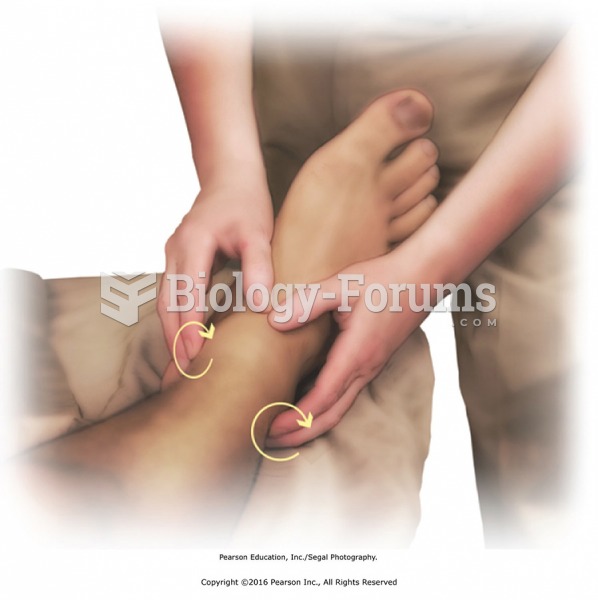This topic contains a solution. Click here to go to the answer
|
|
|
Did you know?
The first oncogene was discovered in 1970 and was termed SRC (pronounced "SARK").
Did you know?
The horizontal fraction bar was introduced by the Arabs.
Did you know?
If all the neurons in the human body were lined up, they would stretch more than 600 miles.
Did you know?
Despite claims by manufacturers, the supplement known as Ginkgo biloba was shown in a study of more than 3,000 participants to be ineffective in reducing development of dementia and Alzheimer’s disease in older people.
Did you know?
In 2012, nearly 24 milliion Americans, aged 12 and older, had abused an illicit drug, according to the National Institute on Drug Abuse (NIDA).
 A latex agglutination test for rheumatoid factor. A positive control at 1. A negative control at 2. ...
A latex agglutination test for rheumatoid factor. A positive control at 1. A negative control at 2. ...
 Circular friction around the ankle with the fingertips. Applying pressure with the fingertips, move ...
Circular friction around the ankle with the fingertips. Applying pressure with the fingertips, move ...





